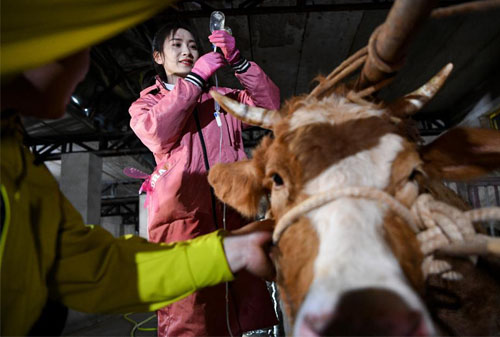Veterinary Point-of-Care Ultrasound (POCUS) is a portable, real-time imaging tool that allows veterinarians to perform targeted diagnostic assessments directly at the animal’s location. This approach enhances decision-making efficiency and reduces the need for more invasive procedures.

The Role of POCUS in Veterinary Practice
In modern veterinary medicine, POCUS has become an indispensable tool, especially in emergency and critical care settings. Its ability to provide immediate insights into an animal’s condition without the need for sedation or transportation makes it invaluable for timely interventions.
Advantages of Veterinary POCUS
1. Non-Invasive and Safe
POCUS is a non-invasive diagnostic method that does not expose animals to ionizing radiation. This makes it a safer alternative to traditional imaging techniques like X-rays or CT scans, particularly for repeated evaluations.
2. Real-Time Imaging
The real-time imaging capability of POCUS allows veterinarians to observe physiological processes as they happen, facilitating immediate clinical decisions.
3. Portability and Accessibility
Modern POCUS devices are compact and portable, enabling their use in various settings, including fieldwork, ambulatory services, and remote locations. This flexibility ensures that animals can be assessed promptly, regardless of their location.
4. Cost-Effective
Compared to other imaging modalities, POCUS is relatively affordable, both in terms of initial investment and maintenance. Its cost-effectiveness makes it accessible to a broader range of veterinary practices.

Clinical Applications in Livestock
In livestock management, POCUS serves multiple purposes:
-
Reproductive Monitoring: Assessing ovarian activity, detecting pregnancies, and monitoring fetal development.
-
Disease Diagnosis: Identifying conditions such as pleural effusions, pericardial effusions, and abdominal abnormalities.
-
Guided Procedures: Assisting in interventions like fluid drainage or biopsy by providing real-time visualization.
Training and Proficiency
While POCUS is user-friendly, proper training is essential to ensure accurate interpretation of images. Structured training programs and hands-on experience are recommended to build proficiency and confidence in using this diagnostic tool.
Limitations and Considerations
Despite its advantages, POCUS has limitations:
-
Operator Dependency: The quality of the diagnostic information obtained is highly dependent on the operator’s skill and experience.
-
Limited Depth Penetration: POCUS may not effectively visualize deep structures or those obscured by gas or bone.
-
Complementary Tool: It should be used in conjunction with other diagnostic methods for comprehensive assessment.
Conclusion
Veterinary Point-of-Care Ultrasound is a transformative tool in animal healthcare, offering rapid, safe, and cost-effective diagnostic capabilities. Its integration into routine veterinary practice enhances the quality of care provided to animals, particularly in field settings and emergency situations.